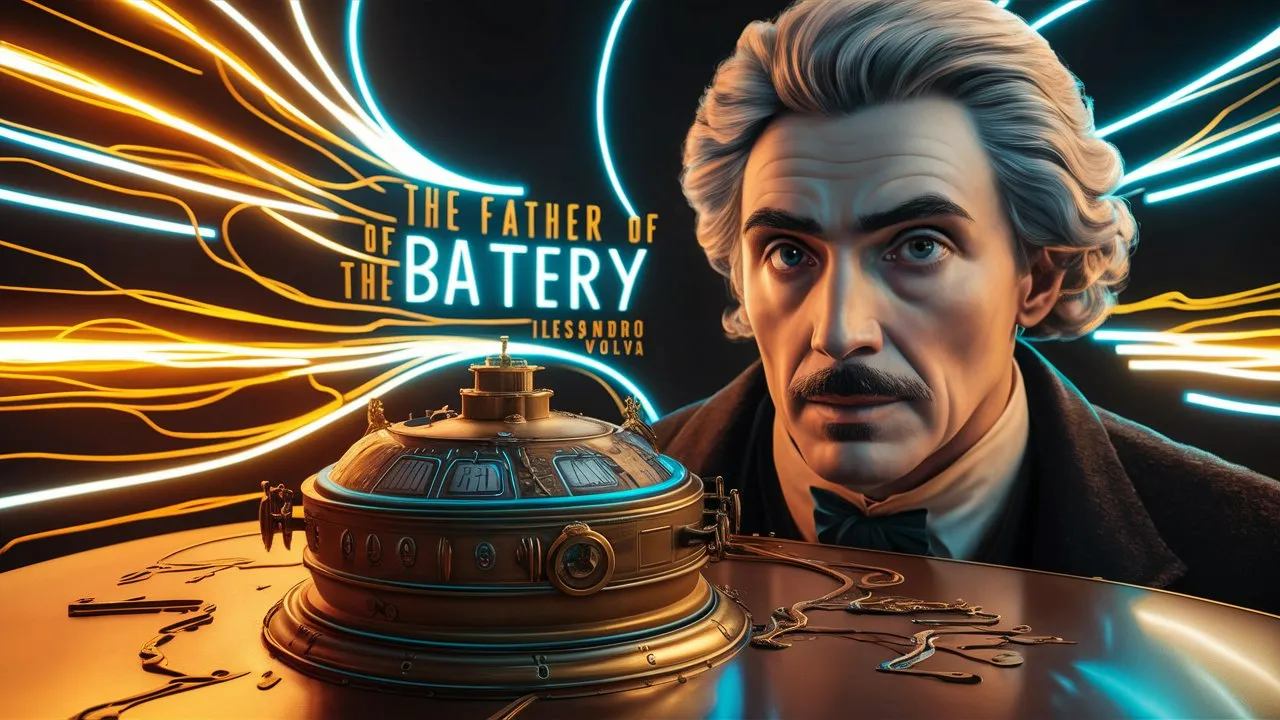
Alessandro Giuseppe Antonio Anastasio Volta was born on February 18, 1745, in Como, a town in present-day Italy. From a young age, Volta displayed a keen interest in science, particularly in the emerging field of electricity. Despite his family's initial reservations about his scientific pursuits—hoping instead that he would enter the priesthood—Volta’s passion for understanding the natural world only grew.
By the time he was in his twenties, Volta was already making a name for himself in the scientific community. His early work focused on atmospheric electricity, and by 1775, he had invented the electrophorus, a device that could generate static electricity, demonstrating his deep understanding of the principles governing electrical forces.
Volta’s journey toward inventing the first battery began with his fascination with the work of his contemporaries, particularly Luigi Galvani, who had discovered "animal electricity"—the idea that electricity was intrinsic to life and could be observed in the muscles of animals. Galvani’s experiments, which involved frog legs twitching when touched by different metals, led him to believe that the muscles themselves generated electricity.
Volta, however, was skeptical of Galvani’s interpretation. Through meticulous experimentation, he proposed an alternative explanation: the electrical current was not generated by the animal tissue but by the contact between two different metals. This hypothesis, known as "contact electricity," was the cornerstone of Volta’s future work and ultimately led to his groundbreaking invention.
In 1800, Volta unveiled the voltaic pile, a simple yet ingenious device that could produce a steady flow of electric current. The pile was composed of alternating discs of zinc and copper, separated by pieces of cardboard or cloth soaked in saltwater (an electrolyte). When stacked together, these elements created a continuous electrical current—something no previous device had been able to achieve.
The voltaic pile was revolutionary for several reasons. First, it was the first practical method of generating electricity that could be sustained over time, unlike the static electricity generated by earlier devices, which was fleeting and difficult to control. Second, it allowed scientists to perform experiments with a consistent and reliable source of electricity, leading to numerous discoveries in electrochemistry and physics.
Volta’s invention was met with widespread acclaim. Napoleon Bonaparte, recognizing the significance of the voltaic pile, invited Volta to Paris in 1801 to demonstrate his invention at the Institut de France. For his work, Volta was awarded numerous honors, including the title of Count by Napoleon himself.
The voltaic pile’s influence on science and technology cannot be overstated. It marked the beginning of a new era in the study of electricity, providing a tool that enabled countless scientific breakthroughs. For instance, English chemist Humphry Davy used the voltaic pile to isolate several chemical elements for the first time, including sodium and potassium. This marked the birth of modern electrochemistry, a field that continues to be of critical importance in today’s world.
Furthermore, the voltaic pile laid the groundwork for the development of more advanced batteries, which have since evolved into the diverse range of power sources we use today. Whether it’s the lithium-ion batteries in our smartphones or the large-scale battery storage systems used in renewable energy grids, the basic principles established by Volta remain fundamental.
Alessandro Volta’s contributions to science extend far beyond the invention of the battery. His work in electricity helped establish it as a legitimate field of scientific inquiry, separate from the mystical associations it had previously held. He was a pioneer in demonstrating that electricity was not merely a curiosity but a powerful and measurable force that could be harnessed and studied systematically.
Volta’s legacy is also enshrined in the very language of science and technology. The unit of electric potential, the volt, is named in his honor, ensuring that his name will continue to be associated with the field he helped to pioneer.
Alessandro Volta’s invention of the voltaic pile was a pivotal moment in the history of science and technology. By creating the first true battery, Volta provided the world with a continuous source of electrical current, a discovery that ignited a revolution in the study and application of electricity. His work laid the foundation for modern electrochemistry and powered the technological advancements that continue to shape our lives.
Today, as we rely on batteries to power everything from our personal gadgets to our renewable energy solutions, we owe a debt of gratitude to Alessandro Volta. His pioneering spirit and relentless curiosity not only illuminated the mysteries of electricity but also sparked a revolution that continues to drive innovation in the modern world.
1. What is Alessandro Volta best known for?
Alessandro Volta is best known for inventing the voltaic pile, the world's first true battery, which provided the first continuous source of electrical current.
2. What was the significance of the voltaic pile?
The voltaic pile was significant because it was the first device capable of producing a steady and reliable flow of electricity, paving the way for advancements in electrochemistry and modern electrical technology.
3. How did Volta’s invention impact the scientific community?
Volta’s invention provided a practical source of electricity, enabling numerous scientific experiments and discoveries, particularly in electrochemistry. It also established electricity as a distinct field of study.
4. Why is the unit of electric potential called a volt?
The unit of electric potential, the volt, is named in honor of Alessandro Volta, recognizing his pioneering work in electricity and his invention of the voltaic pile.
5. How did Volta’s work challenge the ideas of his contemporaries?
Volta challenged Luigi Galvani’s theory of "animal electricity" by proposing that the electric current observed in experiments was due to the contact between different metals, not the animal tissue itself.
To know more, watch our video : https://www.youtube.com/watch?v=WT1ygzN_R04